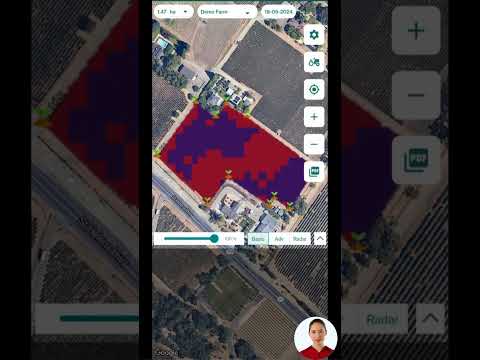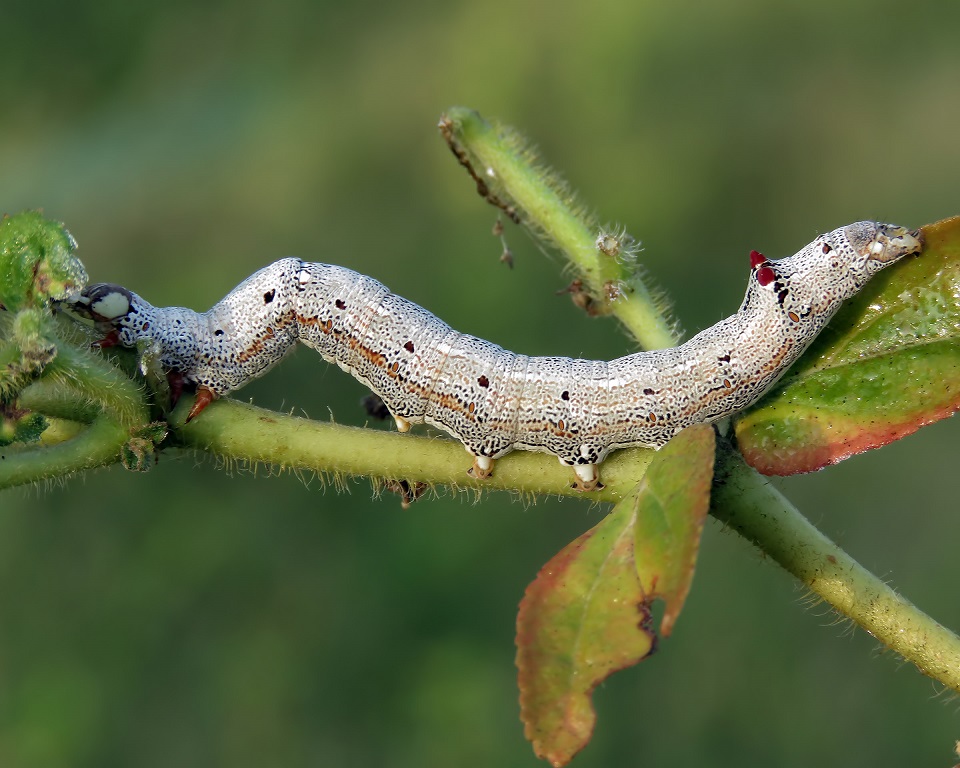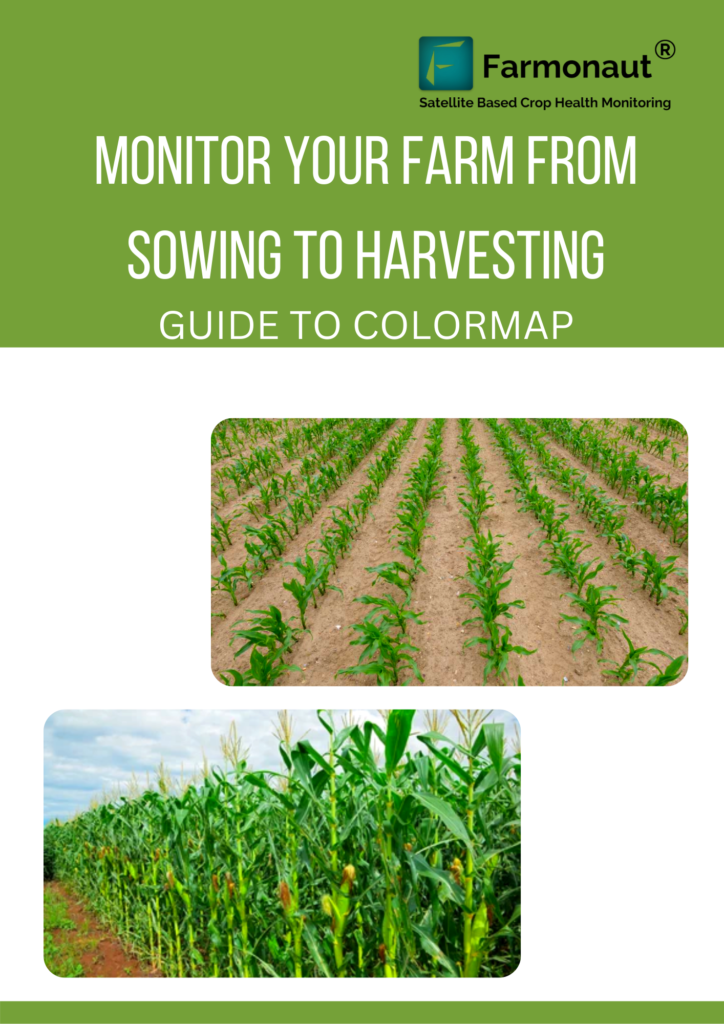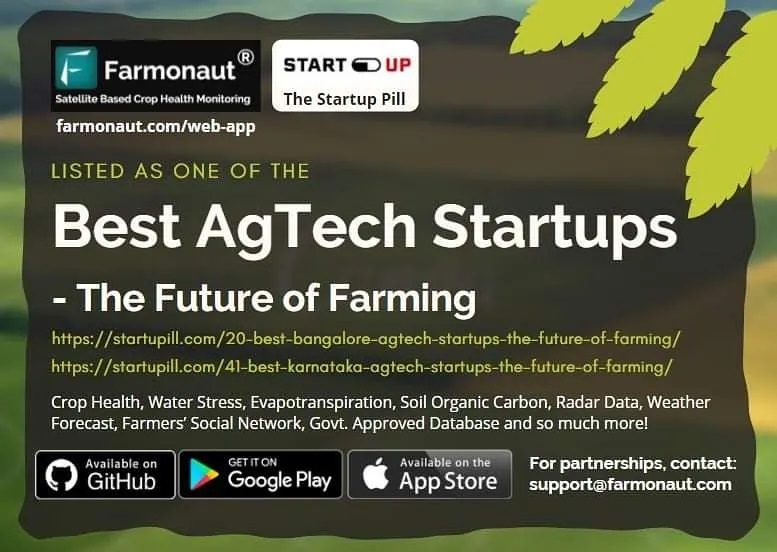Regenerative Agriculture Practices: 7 Shocking Soil Hacks
“Regenerative agriculture can increase soil organic matter by up to 21% in just five years.”
Introduction: Why Regenerative Agriculture Practices Matter
If we want to produce food sustainably while ensuring long-term soil health, environmental resilience, and food security, it is time to re-examine our current agricultural systems. Conventional farming methods, typically reliant on chemical inputs and aggressive tillage, often degrade soil structure, decrease biodiversity, and contribute to erosion and nutrient loss. In contrast, regenerative agriculture offers practical and proven practices that can restore degraded soils, enhance ecosystem services, and build a more resilient food system.
At its foundation, regenerative agriculture is an approach that focuses on restoring and enhancing the health of the soil, increasing biodiversity, and improving the overall resilience of farming systems. Whether you are a smallholder, a large agribusiness, or intrigued by sustainability in food production, exploring the 7 shocking soil hacks of regenerative agriculture could transform how we view our relationship with the land.
Core Principles of Regenerative Agriculture
Let us start by understanding the guiding principles that serve as the foundation for all successful regenerative farming practices. Every decision, from how we plant crops to handling manure or integrating livestock, is built upon these essential pillars:
- Minimizing Soil Disturbance: By reducing or eliminating tillage, we help preserve soil structure, protect beneficial microorganisms, and prevent erosion. Modern no-till farming methods enable crops to be planted directly into undisturbed soil, boosting carbon sequestration in soil and ecosystem integrity.
- Maintaining Soil Cover: Keeping soil covered—with living plants or organic residue—helps shield the soil from erosion, retain moisture, and suppress weeds. Cover cropping techniques establish a living or dead mulch during fallow periods for optimum protection.
- Enhancing Biodiversity: Incorporating diverse plant species and integrating animals increases the variety of soil organisms and the reliability of beneficial ecosystem functions like pest control and nutrient cycling. Crop rotations and agroforestry systems are key strategies.
- Continuous Living Roots: By maintaining living roots throughout the year, we enhance water infiltration, stabilize soil, and support thriving microbial life. Perennials or fast-growing cover crops provide year-round activity and resilience.
- Integrating Livestock: Livestock, when managed properly, can recycle nutrients, improve fertility, and increase organic matter. Practices such as rotational grazing prevent overgrazing and foster ecological balance.
7 Shocking Soil Hacks: Regenerative Agriculture Practices for Ultimate Soil Health
Ready to transform your fields with science-backed, impactful methods? Let us jump into the seven most powerful regenerative soil hacks and uncover how each fuels soil health improvement, strengthens biodiversity in agriculture, and future-proofs our farming systems.
1. No-Till Farming: Preserve Soil Structure & Boost Carbon Sequestration
Traditional tillage disrupts soil structure, exposes living organisms to harsh conditions, and accelerates erosion. No-till farming flips this paradigm. By planting crops directly into undisturbed soil, we:
- Preserve soil integrity—Topsoil remains intact, reducing vulnerability to wind and water erosion.
- Enhance organic carbon sequestration in soil—Organic matter accumulates, pulling carbon from the atmosphere and mitigating climate change impacts.
- Support beneficial soil microorganisms—Fungi, bacteria, and earthworms thrive in undisturbed habitats, supercharging nutrient cycling.
- Reduce input costs—Less fuel and labor is needed, with lower overall soil degradation risks.
*Did you know? Modern no-till systems can improve soil organic matter by up to 21% within a few years, and increase yields in the long term. Read more*
2. Cover Cropping Techniques: Living Mulch for Moisture & Biodiversity
Cover crops are non-harvested plant species grown to cover, enrich, and protect the soil during or between periods of main crop production. Cover cropping techniques include mixes of grasses, legumes, and brassicas, and offer:
- Protection against erosion—Dense root mats and leafy cover shield the soil from rain and wind, greatly reducing erosion.
- Moisture retention—Organic residue and living mulch retain moisture, supporting crop resilience during dry periods.
- Weed suppression—Dense canopy suppresses weed growth naturally, lowering the need for chemical herbicides.
- Biodiversity boost—Diverse cover crops support a rich variety of soil organisms and above-ground beneficial species.
- Natural nutrient cycling—Leguminous cover crops fix atmospheric nitrogen, providing organic nutrients for future crops.
Fields using cover crops show 30% higher biodiversity compared to conventional farming systems.
*Cover cropping not only delivers immediate benefits, but also enhances long-term soil fertility and environmental health for truly sustainable farming.*
Learn more: CBF Key Practices in Regenerative Agriculture
3. Intelligent Crop Rotation: Disrupt Pest Cycles & Maximize Nutrients
Repeated planting of the same crop breed nutrient deficiencies, pest cycles, and soil fatigue. In contrast, strategic crop rotation benefits include:
- Improved nutrient cycling—Alternating crops with different nutrient and rooting profiles (e.g., legumes then cereals) balances extraction and replenishment.
- Pest and disease suppression—Rotating non-host species interrupts pest cycles and reduces disease pressure.
- Optimized soil structure—Mixtures of deep-and shallow-rooted plants decrease soil compaction and enhance aeration.
For maximum resilience, crop rotations often involve 3- or 4-year cycles, integrating legumes, cereals, brassicas, and cover crops.
Learn detailed insights: Practical Action on Regenerative Practices
4. Agroforestry Systems: Trees for Soil and Ecosystem Resilience
Agroforestry systems blend trees or shrubs into agricultural landscapes, combining forestry with crops and/or livestock for integrated productivity. The benefits:
- Enhanced biodiversity in agriculture—Trees offer habitat and food for pollinators and natural enemies, supporting a more diverse ecosystem.
- Soil health improvement—Roots enhance structure, prevent erosion, and contribute organic litter, which decomposes into rich humus.
- Additional income—Farmers gain from wood, fruit, nuts, or other non-timber forest products.
- Climate resilience—Tree canopies buffer crops from wind and extreme heat, stabilizing microclimates.
- Carbon sequestration in soil—Woody biomass locks in substantial carbon both above and below ground.
Explore more examples and types: 5 Regenerative Ag Practices Changing the Game
5. Composting and Organic Nutrient Cycling: Turn Waste Into Gold
Municipalities and farms alike generate tons of organic waste and manure. Instead of burning or dumping, composting transforms this waste into a nutrient-rich soil amendment, fueling organic nutrient cycling. Composting delivers:
- High-quality organic fertilizer with a diverse microbial community.
- Enhanced soil structure and water-holding capacity due to increased organic matter.
- Significant reductions in chemical input requirements (fertilizers & pesticides).
- Lowered environmental footprint—Proper manure management minimizes nutrient runoff, reducing pollution risks in adjacent waterways.
Composting can be as simple as windrows of crop residue and animal manure on-farm, or as advanced as community-scale aerobic digestion units.
Get tips and step-by-step guidance: AgTech Folio3 on Regenerative Ag Practices
6. Integrating Livestock and Managed Grazing: Animal Power for Soil Fertility
Well-managed livestock systems can be a critical engine for regenerative agriculture when animals are treated as mobile contributors to soil fertility rather than extractive elements. Integrating livestock, using rotational grazing or holistic management, unlocks huge soil and ecosystem benefits:
- Efficient nutrient cycling—Manure and urine are distributed evenly, enhancing fertilization and soil organic matter.
- Encouragement of plant regrowth—Short, controlled grazing pulses followed by adequate recovery periods allow pastures to regrow vigorously.
- Biodiversity increases—Various grass, legume, and forb species regenerate, supporting pollinators and wildlife.
- Improved water infiltration—Compacted soils are loosened by hooves, facilitating better rain absorption.
*Fun fact: Rotationally grazed pastures can build organic matter and sequester more carbon than many cropped fields.*
For more, see: Regenerative Agriculture: Dreamwork Network
“Fields using cover crops show 30% higher biodiversity compared to conventional farming systems.”
7. Maintaining Continuous Living Roots: Support Microorganisms & Water Resilience
Keeping living roots in the soil throughout the year is a hidden engine of soil regeneration. Each living root feeds a micro-ecosystem in the rhizosphere, releasing sugars that nourish beneficial microorganisms while:
- Stabilizing soil particles to prevent erosion, even during heavy rainfall or dry wind events.
- Improving water infiltration and retention—Active roots create channels for rain to percolate deep into the profile.
- Enabling year-round nutrient cycling and resilience to weather fluctuations.
- Facilitating carbon sequestration in soil via ongoing photosynthesis and carbon transfer underground.
This can be achieved through perennial crops, offseason cover crops, and inter-seeded plants—keeping the rhizosphere bustling even between main crop cycles.
Comparative Table: 7 Regenerative Soil Practices—Benefits & Estimated Impact
| Practice | How It Works | Estimated Soil Health Improvement (%) | Biodiversity Boost (Beneficial Species Supported) | Sustainability Impact |
|---|---|---|---|---|
| No-Till Farming | Plants seeded directly into undisturbed soil; Minimal disturbance to structure and biota. |
+15-21% in soil organic matter over 5 years | Supports up to 3x more earthworms and soil fungi | Reduces fuel/chemical input by 20-35%; robust carbon sequestration |
| Cover Cropping | Diverse, non-harvested plants grown during or between main crops, shielding and nourishing soil. | +11-18% in microbial activity; +6-13% organic matter in 5 years |
30% boost in beneficial insects, microbes, birds | Cuts erosion by up to 85%; reduces fertilizer need |
| Crop Rotation | Sequential planting of different crops to disrupt pest cycles and optimize nutrient use. | 10-14% increase in soil fertility; +8-12% root diversity |
Expanded pest-eating species by +10-20% | Reduces synthetic input needs by 15-30%; lowers disease risk |
| Agroforestry Systems | Integrates trees/shrubs with crops or livestock, improving ecosystem complexity. | +18-22% long-term soil carbon; better texture & stability |
Supports 2-5x pollinators and wildlife species | Major carbon sink; diversified income and climate resilience |
| Composting | Turns organic waste/manure into microbe-rich fertilizer for crops. | +8-15% organic matter; +20% increase in active soil microorganisms |
Boost in soil microbes, fungi, earthworms | Reduces chemical input; diverts waste, curbs pollution |
| Rotational/Managed Grazing | Livestock moved through paddocks to graze and fertilize in rotation. | +13-19% soil organic matter; better water retention |
More diverse pasture biota; attracts birds, small mammals | Prevents overgrazing; boosts carbon sequestration |
| Continuous Living Roots | Maintaining active roots year-round for nutrient cycling and soil stability. | +10-16% in soil aggregation and microbial activity | Greater abundance of mycorrhizal fungi, microbial diversity | Strengthens resilience to drought/flooding; continual carbon sink |
Environmental & Economic Benefits of Regenerative Agriculture
Implementing the above regenerative agriculture practices delivers transformational benefits for farmers, the environment, and society:
Soil Health Improvement
- Increased water holding capacity and resilience to droughts or floods.
- Enhanced nutrient density—Crops are richer in vitamins and minerals due to balanced nutrients in regenerated soil.
- Reduced erosion—Cover cropping and minimized disturbance protect and preserve soil integrity during heavy rainfall or wind events.
Biodiversity in Agriculture
- Pollinators, predatory insects, soil-dwelling organisms, and bird or mammal species thrive in diversified systems—safeguarding ecosystem control functions.
- Increased plant species richness and variety reduces vulnerability to pests and environmental shocks.
Carbon Sequestration in Soil & Climate Action
- Soil as a carbon sink: All seven soil hacks boost sequestration rates—removing atmospheric CO2 and locking it underground.
- Farmers who use carbon footprinting tools can monitor and certify their emission reductions, gaining access to emerging green finance and carbon markets.
Reduced Costs & Increased Yields
- Lower input costs—Less need for expensive fertilizers, pesticides, and fuel.
- Long-term increases in yields—Improved soil structure, rooting, and nutrient cycling result in more robust plants and higher productivity as the system matures.
- New market opportunities through sustainable and traceable agricultural products—use product traceability solutions to assure buyers of genuine regenerative practices.
Farmonaut: Empowering Regenerative Agriculture with Digital Precision Solutions
A successful transition to regenerative agriculture is accelerated by modern farm management technologies. Farmonaut offers a robust, affordable platform to support agricultural stakeholders in adopting and tracking the impact of regenerative strategies.
Why Choose Farmonaut for Your Regenerative Journey?
- Satellite-Based Crop Health Monitoring: Real-time NDVI and soil moisture data help detect crop stress, optimize irrigation, fertility, and pest management, boosting yields and resource efficiency.
- Personalized AI Farm Advisory: Service like Jeevn AI delivers actionable insights on sustainable practices, recommended timings for planting or rotational grazing, and alerts to prevent erosion or disease outbreaks.
- Blockchain-Based Traceability: Ensure end-to-end transparency using blockchain-powered product traceability tools. Communicate your regenerative methods and origin authenticity to consumers and buyers.
– Explore Farmonaut Traceability -
Carbon Footprinting and Sustainability Tracking: Monitor, reduce, and report on-farm greenhouse gas emissions, improving eligibility for climate-smart financing.
– Farmonaut Carbon Footprinting Solutions -
Fleet, Resource, & Large-Scale Management: Coordinate vehicles, farm machinery, and team actions to reduce costs, lower emissions, and scale regenerative strategies efficiently.
– Farmonaut Fleet Management
– Large-Scale Farm Management App -
Crop Loan & Insurance Support: Satellite-based farm data enables rapid, fraud-resistant loan approvals and robust insurance claim verifications.
– Farmonaut Crop Loan & Insurance -
API & Developer Integration: Seamlessly integrate real-time satellite, weather, and field data into existing apps or farm software for customized, scalable solutions.
– Farmonaut API Access |
Developer Docs
Farmonaut’s technology bridges the gap between tradition and precision, making regenerative agriculture scalable, measurable, and profitable for everyone—from solo farmers to governmental organizations.
Try Farmonaut’s Android, iOS, or web apps to monitor your field health, boost sustainability, and unlock real transparency.
Farmonaut Subscriptions & Plans
Start your journey towards precision sustainability with our flexible subscription options:
Key Challenges and Considerations in Regenerative Farming
While the benefits of regenerative agriculture are significant, transitioning to these methods can present distinct challenges:
- Initial Investment & Transition Period: New equipment for no-till systems, cover crop seeds, or fencing for rotational grazing can require up-front costs.
- Knowledge & Training: Success depends on farmer education and community support. Each field is unique—access to up-to-date, localized advisory (like Farmonaut’s Jeevn AI system) can be a game changer.
- Short-Term Yield Variability: Yields may fluctuate as the ecosystem rebalances. Commitment to long-term soil health improvement pays off, but patience and ongoing monitoring are required.
- Policy & Incentive Gaps: Governments and institutions must help with transition incentives, technical resources, and peer-to-peer learning platforms.
- Market Access & Certification: Connecting to value-added supply chains requires transparent traceability solutions (where Farmonaut’s blockchain platform excels), and clear definitions of “regenerative” for buyers and consumers.
Despite these barriers, the transition is feasible and increasingly supported by technology and a rapidly-growing global network of practitioners, research, and innovation.
FAQ: Regenerative Agriculture Practices
What is regenerative agriculture in simple terms?
Regenerative agriculture refers to a holistic approach to farming where the focus is on restoring and improving soil health, biodiversity, and ecosystem resilience. It involves using natural processes—like minimizing tillage, maintaining soil cover, rotating crops, integrating livestock, and composting—instead of relying heavily on chemical inputs and monocultures.
How does regenerative agriculture improve soil health?
Practices such as no-till farming, cover cropping, and composting add organic matter, enhance nutrient cycling, and support beneficial soil organisms. This results in better soil structure, increased water retention, boosted fertility, and stronger resilience to erosion and environmental stress.
What is the role of biodiversity in regenerative systems?
Biodiversity in agriculture ensures ecosystem stability by supporting multiple beneficial species. Diverse plantings, agroforestry, and livestock integration attract pollinators, pest predators, and soil microbes, reducing pest outbreaks and promoting natural nutrient cycling.
Are regenerative agriculture practices economically viable?
Yes. While initial investment and transition can be challenging, regenerative methods generally lower input costs (chemical fertilizers, pesticides, and fuel), improve long-term yields, and open up new market opportunities for sustainably produced food. Digital solutions like Farmonaut further boost efficiency and data-driven decision-making.
Does regenerative farming help fight climate change?
Absolutely! By increasing organic matter and root biomass in the soil, regenerative practices sequester atmospheric carbon dioxide. Healthy, regenerated soils store more carbon and help mitigate climate change impacts on agriculture.
How can technology support regenerative transitions?
Precision digital tools—like Farmonaut’s satellite-based crop monitoring, AI-powered advisory, blockchain traceability, and real-time carbon tracking—help farmers implement, monitor, and document successful regenerative agriculture, making the transition smooth and efficient for farms of any scale.
Conclusion: The Future of Food Lies in Regenerative Soil Practices
At every scale, regenerative agriculture unites tradition with innovation to restore soil, enhance biodiversity, and build food system resilience. By embracing the 7 shocking soil hacks—from no-till farming and cover cropping to agroforestry systems and continuous living roots—we pave the path for sustainable farming practices in a changing world.
Whether you are a new or seasoned grower, the health of our soils defines the health of our food, our climate, and future generations. Unlock next-level performance and transparency with easy-to-access tech platforms like Farmonaut and let data guide your regenerative journey.
Together, let’s support a global shift to regenerative agriculture practices—for people, for the planet, and for a truly resilient future in food.






















